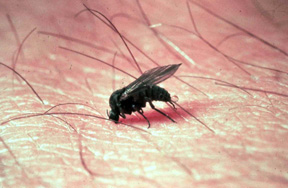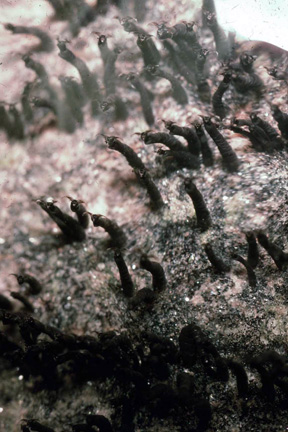Blackflies are out and at it in southern Michigan
Editor’s note: This article is from the archives of the MSU Crop Advisory Team Alerts. Check the label of any pesticide referenced to ensure your use is included.
Anyone who has waded in a trout stream in Northern Michigan during the early summer knows that black flies are among the worst biting flies that nature has to offer. They attack in large swarms and favor the face and around the ears for feeding sites. They get tangled in our hair and they get into our eyes. We breathe them into our noses and mouths. Their bites swell up, bleed and itch for weeks.
Michigan is blessed with over 65 species of black flies with the majority of species occurring in the northern areas where clean rivers and streams are numerous. All black fly larvae are aquatic and only develop in clean, well-oxygenated moving water. It shouldn’t be surprising that one result of improving water quality in southern Michigan rivers and streams is a noticeable increase in the number of black flies.
Black flies are small stout flies with a humpbacked appearance. Many that have fed on me have white stripes on their legs. Peak black fly season in Michigan is usually from mid-May to mid-June but the number of species we have means one can enjoy them well into August and early September if you are in the right place. The adult flies live for about two to three weeks. Only females bite. Males, thankfully, feed on nectar. Unlike mosquitoes, they do not come indoors, are only active during the day and cannot bite through clothing.
You can protect yourself from black fly bites by wearing long-sleeved shirts and long pants. Tuck your pant legs into your socks and your shirt into your pants. Some say that the flies are attracted to dark colors so blue, purple, black, and brown may not be good fashion choices if you are in black fly country. Hats are a must and those equipped with netting may be the only way to keep them off your face and out of your hair. I have found that insect repellents containing DEET offer some protection, but also there are times the flies will bite regardless of the repellent or amount used.



 Print
Print Email
Email



